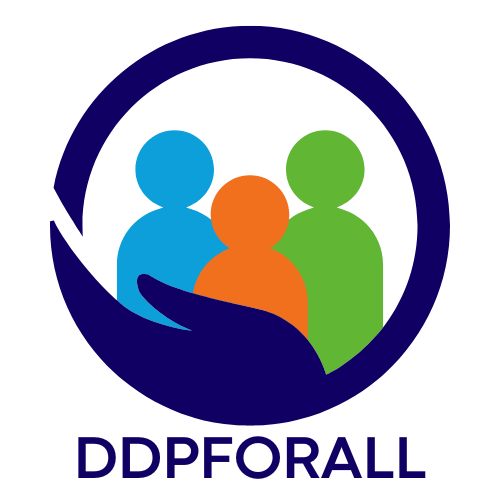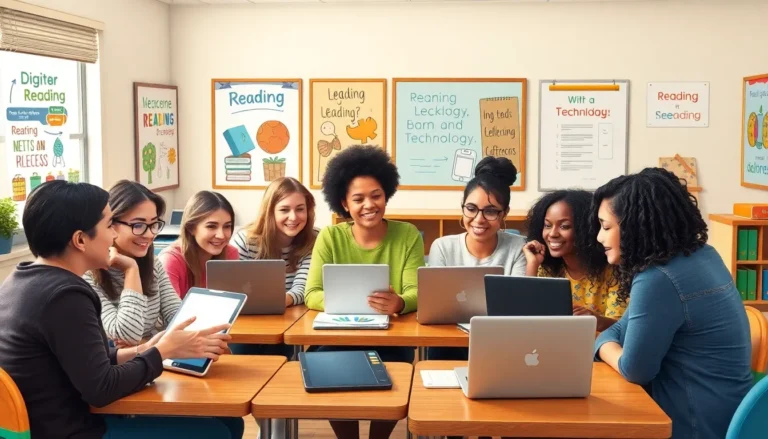Table of Contents
ToggleUnderstanding what you read shouldn’t feel like deciphering hieroglyphics. Comprehension strategies are like a trusty GPS for navigating the tangled roads of text. Whether it’s a dense novel or a complex article, these strategies help readers unlock meaning and make sense of the chaos.
Overview of Comprehension Strategies
Comprehension strategies play a crucial role in enhancing reading skills, guiding readers through various texts. These approaches aim to improve clarity and understanding across different forms of written material.
Definition and Importance
Comprehension strategies refer to techniques that assist readers in making sense of texts. Understanding these strategies proves vital for both educators and students, as they facilitate deeper engagement with complex ideas. Effective implementation of these strategies leads to improved retention and application of information. Moreover, recognizing the significance of comprehension strategies fosters critical thinking and analytical skills, allowing readers to navigate a world filled with information.
Types of Comprehension Strategies
Multiple types of comprehension strategies exist to cater to diverse reading needs. Visualization assists readers in creating mental images based on the text, enhancing recall. Summarization allows readers to distill key points, aiding in memory retention. Inferencing encourages readers to read between the lines, drawing conclusions not explicitly stated. Furthermore, questioning promotes interaction with the text, fostering curiosity and deeper understanding. Each strategy contributes uniquely to a reader’s ability to comprehend and interpret written material effectively.
Effective Comprehension Strategies

Comprehension strategies enhance reading skills and improve understanding. Various techniques exist, each serving a unique purpose.
Predicting
Predicting involves making educated guesses about a text based on prior knowledge and context. Readers who predict outcomes engage actively with the material. This strategy encourages them to formulate questions about what might happen next. By anticipating events and character actions, readers create a mental framework that aids in comprehension. Effective predictions can improve focus and retention of crucial details. For example, when reading a mystery novel, contemplating the culprit before the reveal enhances engagement and excitement.
Visualizing
Visualizing helps readers form mental images of the content. This strategy creates a vivid representation of ideas, characters, and settings within a text. Engaging multiple senses fosters a deeper emotional connection to the material. Readers who visualize often find it easier to recall details later on. Techniques like drawing scenes or imagining movie-like scenarios can solidify understanding. For instance, while reading about a beach, picturing the waves, sand, and sun enhances enjoyment and comprehension.
Questioning
Questioning promotes active engagement with the text. Creating questions allows readers to delve deeper into the material. This strategy leads to increased curiosity and critical thinking. Various types of questions can arise, including clarifying details or analyzing themes. Readers who pose questions often uncover deeper meanings and connections within a text. Asking, “What does this character symbolize?” or “Why did the author choose this setting?” can lead to significant insights and a richer reading experience.
Implementing Comprehension Strategies in Education
Effective use of comprehension strategies enhances student learning outcomes. Incorporating these approaches in the classroom fosters better understanding of complex texts.
Classroom Activities
Engaging students through interactive activities strengthens comprehension strategies. Group discussions allow students to share insights and deepen understanding of text. Role-playing exercises help students visualize characters and settings, making the material more relatable. Graphic organizers assist in mapping out ideas, promoting clarity and focus. Incorporating games can introduce competition while reinforcing comprehension concepts. Lastly, guided reading sessions enable personalized support, catering to diverse learning needs.
Assessing Student Understanding
Assessing comprehension strategies ensures that students can effectively interpret texts. Teachers can use exit tickets to gauge understanding at the end of lessons. Quizzes focusing on key concepts determine students’ grasp of topics. Peer assessments encourage collaboration and critical thinking, while self-reflections promote personal accountability. Observational checklists help educators track progress in comprehension skills over time. Furthermore, one-on-one conferences allow for tailored feedback, enhancing the learning experience.
Challenges in Teaching Comprehension Strategies
Teaching comprehension strategies poses several challenges that can affect both educators and students.
Student Engagement
Students often display varying levels of engagement in comprehension activities. Interest in lessons can falter when the material feels irrelevant or too complex. Incorporating relatable texts tends to spark curiosity and encourage participation. Interactive techniques such as discussions or collaborative projects help maintain focus. Additionally, using multimedia resources appeals to diverse interests, promoting deeper exploration of texts. Strategies must prioritize hands-on engagement to foster a love for reading and comprehension. Tools like graphic organizers or digital platforms often enhance involvement, as they create dynamic learning environments.
Different Learning Styles
Catering to different learning styles remains a critical challenge in teaching comprehension strategies. Visual learners prefer images and diagrams, while auditory learners thrive in discussions and oral activities. Kinesthetic learners benefit from movement and hands-on experiences during lessons. Recognizing these differences can help tailor instruction, ensuring that comprehension strategies resonate with each student. Flexible teaching approaches often yield better results, enabling students to grasp complex texts more effectively. Educators may leverage technology, such as audiobooks or educational apps, to accommodate diverse learning preferences, ultimately maximizing comprehension outcomes.
Mastering comprehension strategies is vital for navigating today’s complex texts. These techniques not only enhance understanding but also promote critical thinking and engagement. By incorporating diverse strategies like visualization and questioning, readers can connect more deeply with material and retain information more effectively.
In educational settings, implementing these strategies through interactive activities can significantly improve student outcomes. Addressing different learning styles and interests ensures that all students benefit from tailored approaches. As educators and learners embrace these methods, the journey through reading becomes more enriching and enjoyable, ultimately leading to a greater appreciation of literature and knowledge.







